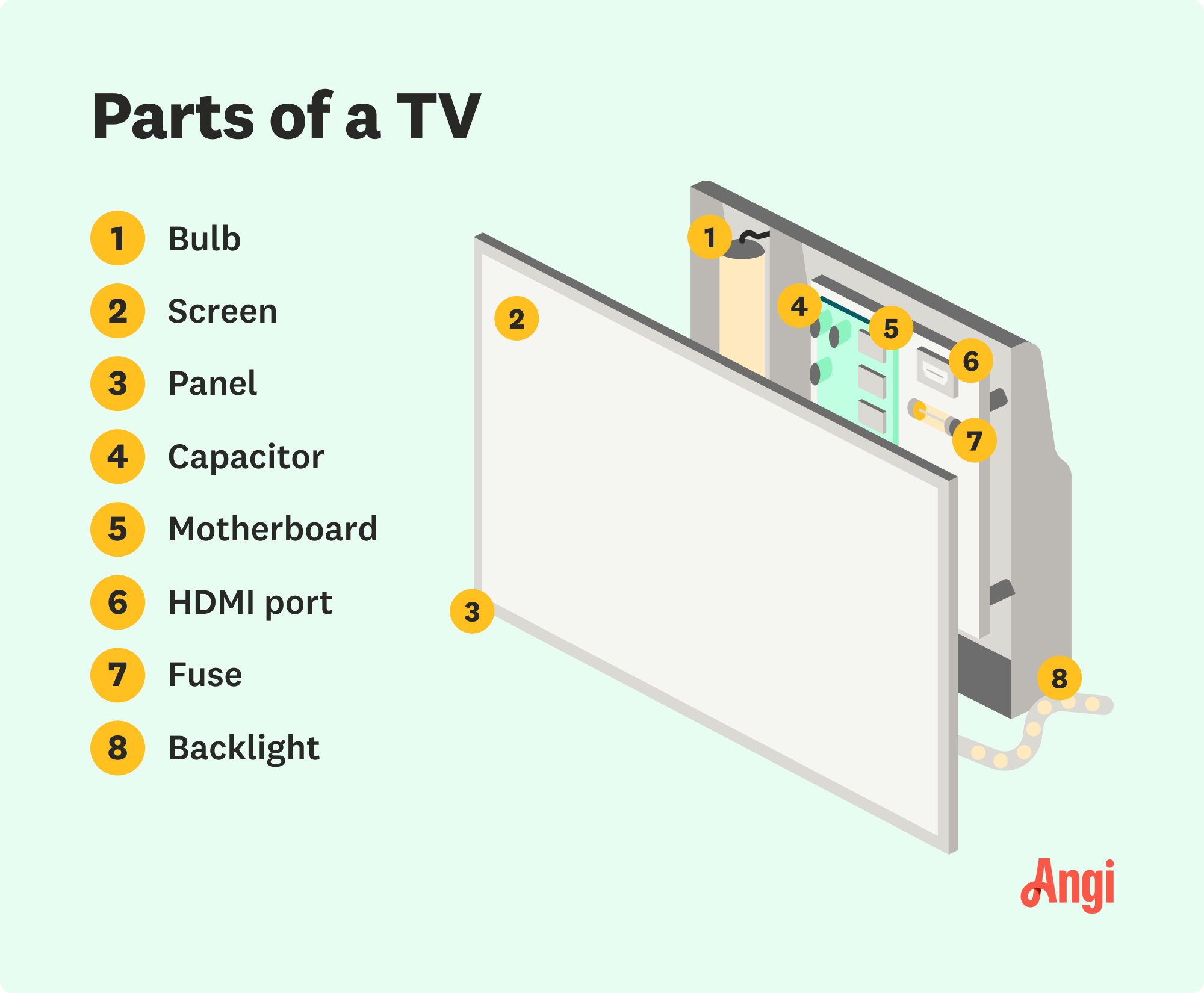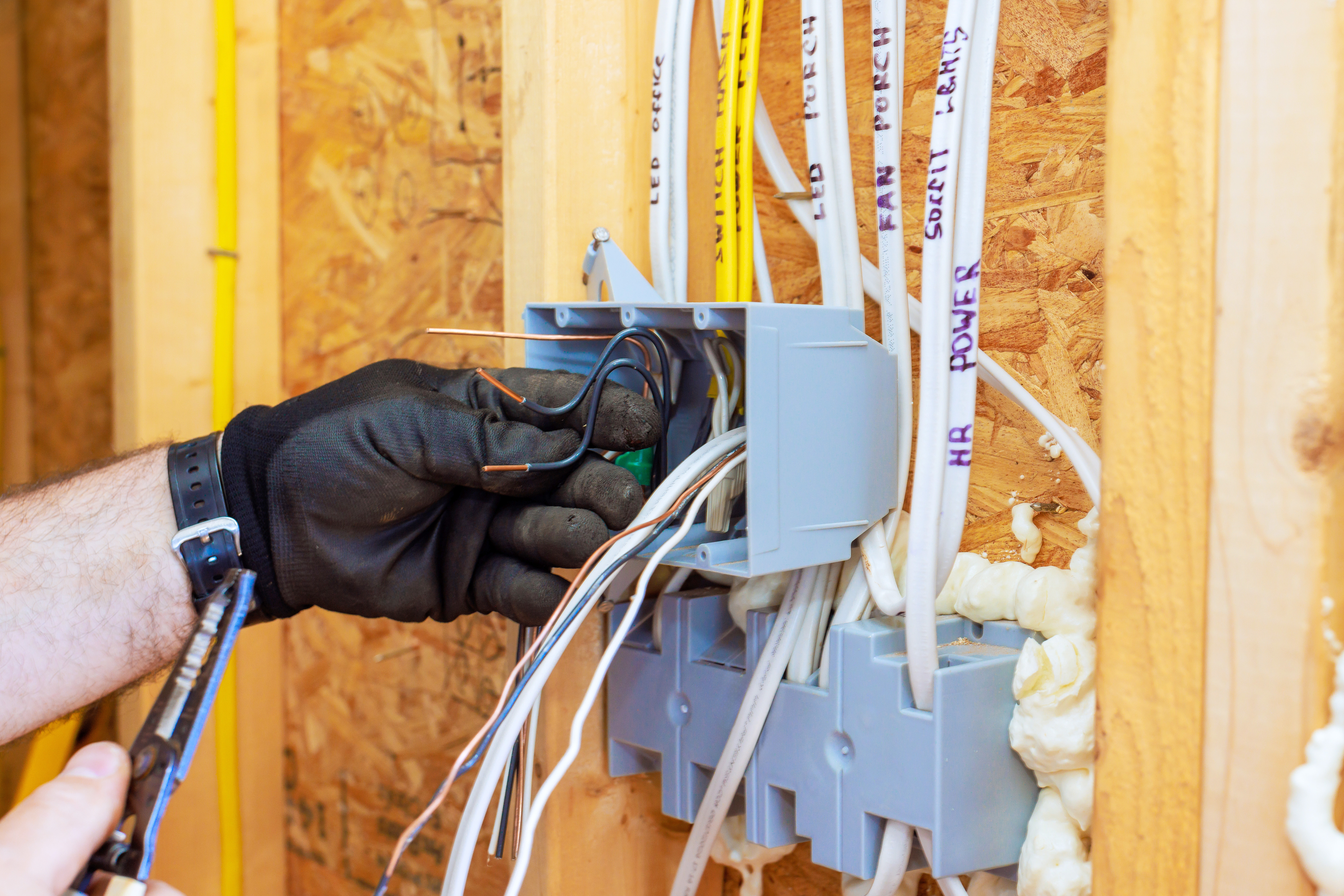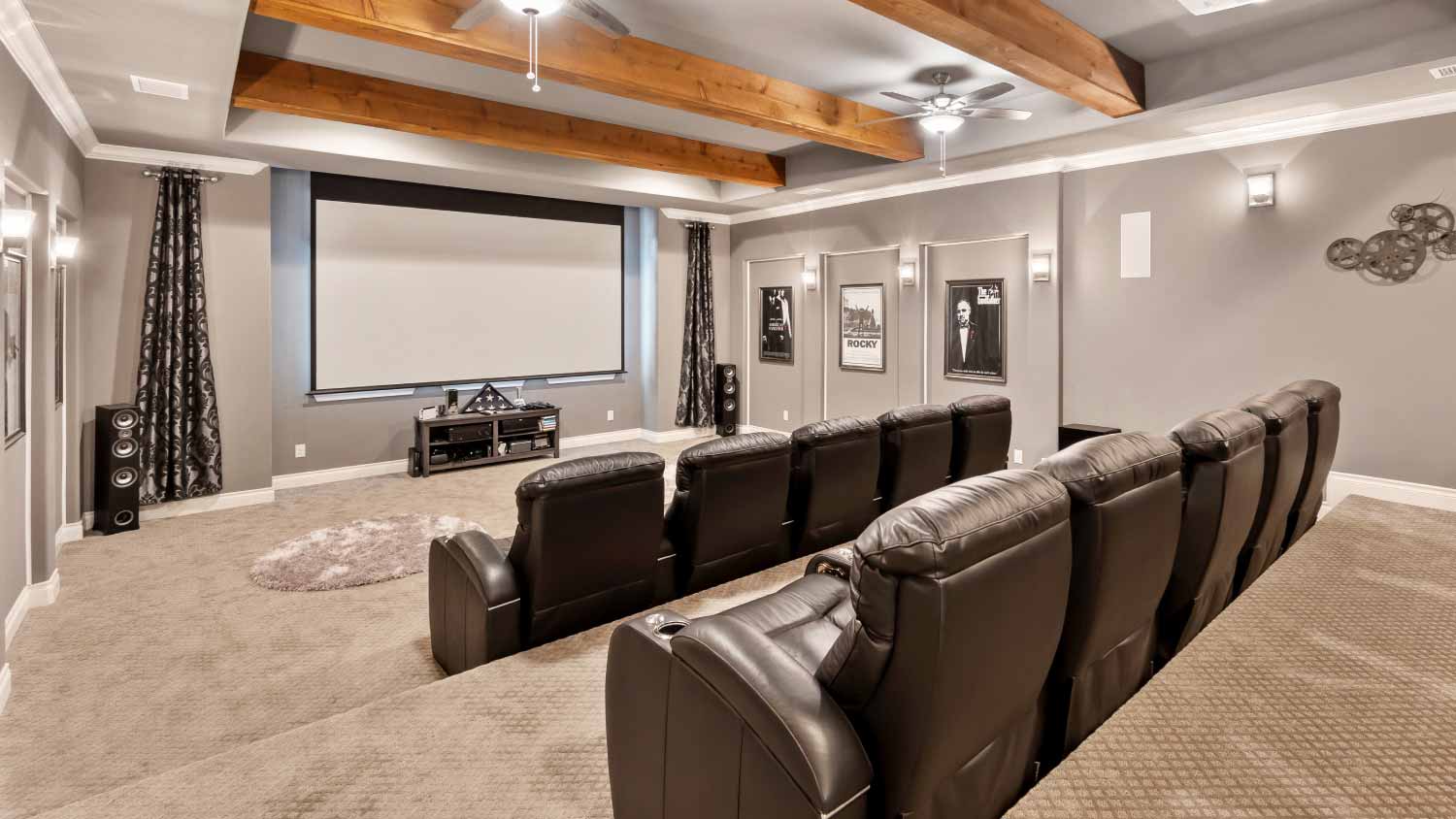
Whether you DIY or go with a pro will determine your ceiling speaker installation cost. Follow this guide to help you budget for your home audio project.
Most TV repairs cost between $100 and $2,000, with an average of $300, depending on repair type, TV brand, size, and labor rates


TV repair costs are influenced by the type of repair, TV model, brand, and technician labor rates.
TV repair is the process of diagnosing and fixing issues with your television, from screen problems to power failures.
Investing in repairs can extend your TV’s lifespan and help you avoid the higher cost of replacement.
Completing necessary repairs keeps your home entertainment running smoothly and may protect your investment.
Fixing remote sensors may cost as little as $100, while repairs for motherboards and screens drive costs higher.
This article was created using automation technology and thoroughly fact-checked and edited by an Angi Editor in accordance with our AI policy.
TV repair costs range from $200 to $500, with most homeowners paying an average of $300. The exact price depends on the type of repair, TV brand, and technician rates. Understanding these factors helps you budget for your TV repair, avoid unexpected expenses, and make the best financial decision for your home.

When budgeting for TV repair, it’s important to consider all the elements that influence the final price. Costs can vary based on the issue, your TV’s make and model, and where you live.
Different TV issues require different fixes, each affecting your total TV repair cost. Some repairs are simple, like replacing a remote sensor, while others, such as screen replacements, are more complex and expensive.
| Repair | Description | Average Cost |
|---|---|---|
| Screen replacement | Replacing damaged or cracked display | $400–$4,200 |
| Backlight repair | Fixing dark or uneven screen lighting | $100–$250 |
| Power board | Repairing or replacing power supply board | $200–$475 |
| Motherboard | Fixing logic or motherboard issues | $200–$450 |
| Speaker replacement | Replacing faulty internal speakers | $90–$260 |
| Port repair | Repairing HDMI, USB, or other input ports | $60–$260 |
| Remote sensor | Replacing or repairing remote sensor | $75–$150 |
Screen replacement is essential if your display is cracked, shattered, or has large dead spots. Screens are prone to damage from impacts or falls, especially in homes with children or pets. This is a less frequent repair but necessary for restoring full functionality. If you see lines, black spots, or no image, it’s time to seek professional help.
A malfunctioning backlight can cause a dim or uneven display. Backlights are a common failure point, especially in older LED and LCD TVs. Homeowners need this repair when the screen goes dark but sound continues. Flickering, dark patches, or total darkness are key signs.
If your TV will not turn on or shuts off unexpectedly, the power supply board may be the culprit. Power boards can fail due to electrical surges or age. This repair is moderately common and essential for operation. Look for signs like no power, random shutdowns, or blinking indicator lights.
The main board controls your TV’s processing and connectivity. Problems here can lead to frozen screens, input issues, or no signal. This repair is less common but critical for smart TVs and units with advanced features. Seek repair if your TV fails to boot or loses connection to devices.
Faulty internal speakers can cause distorted or no sound. Speaker repairs are relatively simple and common in older TVs. If your TV’s audio is muffled, crackling, or missing, consider this repair.
Broken HDMI, USB, or other input ports prevent you from connecting devices. These ports can wear out from frequent use. Port repairs are common in homes with multiple devices. If you lose connection or notice loose ports, a repair is needed.
A non-responsive TV to remote commands points to a faulty remote sensor. This is a minor but necessary repair for ease of use. If your remote works intermittently or not at all, the sensor may need replacement.
TV technology has evolved, and repair costs vary by type. The complexity of newer models and the availability of parts can make some repairs pricier than others. LED and LCD TVs are the most common and affordable to repair. OLED, QLED, and 4K models may cost more due to advanced components and part scarcity. Plasma, while older, can also be costly to fix due to discontinued parts.
| TV Type | Description | Average Cost |
|---|---|---|
| LED | Standard modern LED panel | $100–$350 |
| LCD | Older LCD display technology | $100–$475 |
| OLED | High-end organic display, slim design | $200–$1,000 |
| Plasma | Discontinued, heavy, older tech | $150–$600 |
| QLED | Premium quantum dot LED | $200–$475 |
| Smart TV | Includes Wi-Fi and app integration | $150–$475 |
| 4K | Ultra-high definition resolution | $200–$400 |
The brand of TV significantly influences TV repair cost. Well-known brands like Samsung, LG, and Sony may have higher part costs but offer better warranty support. Brands with less available replacement parts can be more expensive to repair, as components may need to be special ordered or sourced from overseas.
If your TV is a premium or imported brand, expect to pay more for repairs. Conversely, widely available brands like Vizio or TCL have more affordable repair options. Always check if your brand offers reliable warranty or support services, as this can lower your out-of-pocket expenses.
The size of your TV, measured diagonally in inches, affects both the cost of replacement parts and the labor involved. Larger TVs and home theaters require bigger, more expensive screens and more time to disassemble and repair. For very large TVs, transporting the unit to a repair shop can also add to costs, or you may need to pay extra for in-home service.
The type and quality of replacement parts used in your repair will impact the total TV repair cost. Original equipment manufacturer (OEM) parts are designed by your TV’s brand and cost more. Aftermarket parts are less expensive but may not last as long or fit perfectly. Choosing OEM parts ensures compatibility and quality but increases cost. For older or less valuable TVs, aftermarket parts may be a practical choice.
Manufacturer or retailer warranties can drastically reduce or eliminate your TV repair cost. Most new TVs come with a one to two year warranty, covering manufacturing defects and some repairs. Extended warranties may cover additional years or accidental damage.
Always check your warranty status before scheduling any repairs. Some repairs, like screen damage, may not be covered if caused by accidents or misuse. Keep in mind that unauthorized DIY repairs can void your warranty.
Some repair professionals and retailers offer TV maintenance plans. These plans include annual inspections, internal cleaning, minor repairs, and priority service. Maintenance plans are paid annually or monthly and can be cost-effective if you own multiple devices.
Compare the cost of a maintenance plan to pay-as-you-go repairs. If you rarely need repairs, a plan may not save money, but for households with several electronics, bundled plans can offer peace of mind and long-term savings.
Labor is a major component of TV repair costs. Hiring certified TV technicians, electronics repair shops, and in-home service providers may come with different rates. Hourly rates for TV repair range from $50 to $125, while some shops offer flat-rate pricing for common repairs.
Labor costs vary based on technician experience, certifications, and your location. In urban areas, rates are higher due to increased overhead. Additional fees may apply for diagnostics, travel, or after-hours service.
Where you live can influence TV repair costs. Urban and high-cost-of-living areas tend to have higher labor and part prices. In rural areas, limited access to repair shops may mean additional travel or service area fees.
In-home repairs are convenient but cost more than bringing your TV to a shop. Always ask if there are extra charges for travel, delivery, or after-hours appointments.
Some TV repairs require extra services. Add-on costs may include:
Diagnostic fees: $75–$150
Wall mount reinstallation: $90–$600
Software updates or reprogramming: $75–$100
These services may be necessary if your TV is wall-mounted, needs a software update, or if you want safe disposal of broken components.
Deciding whether to repair or replace your TV depends on several factors. If your TV is new, under warranty, or the repair is minor, repairing is the better choice. If your TV is several years old, has extensive damage, or the repair cost approaches the price of a new unit, replacement makes more sense.
A useful guideline is the 50% rule: if TV repair costs exceed 50% of the cost to buy a new TV, replacement is recommended. For example, if a new TV costs $500, and the repair is $300, replacement is likely the smarter investment.
Repairing your TV reduces electronic waste and can be more convenient than shopping for and setting up a new device. However, new TVs may offer improved picture quality, energy efficiency, and smart features, making replacement appealing for outdated models.
Some homeowners consider DIY TV repair to save on labor costs. DIY repairs require purchasing parts, basic tools, and investing time to learn repair steps. While you can save $50 to $150 per hour on labor, DIY risks voiding your warranty, causing further damage, and exposing yourself to electrical hazards.
Simple repairs, like replacing a remote sensor or tightening loose cables, are DIY-friendly. Complex issues like screen replacement, power board repairs, or electrical faults should be handled by professionals. Attempting major repairs without proper skills can lead to costlier problems.
Professional repairs cost more upfront but come with expertise, warranties, and peace of mind. While DIYers can complete tasks like swapping out cables or cleaning dust from vets and fines, we recommend calling a TV repair pro for anything involving internal electronics or display panels.
Keep your TV repair costs under control with these budgeting tips:
Get multiple quotes from local repair pros to compare pricing and services.
Check your TV’s warranty status before scheduling repairs to avoid unnecessary costs.
Consider in-shop repair instead of in-home service to save on travel fees.
Maintain your TV regularly by dusting vents and using high-quality surge protectors.
Address minor issues early to prevent them from becoming expensive repairs.
Opt for reputable, certified technicians to ensure quality work and avoid repeat repairs.
Consider bundled maintenance plans if you have several electronics in your home.
Home is the most important place on earth, which is why Angi has helped more than 150 million homeowners transform their houses into homes they adore. To help homeowners with their next project, Angi provides readers with the most accurate cost data and upholds strict editorial standards. We extensively research project costs to develop the pricing data you see, so you can make the best decisions for you and your home. We rely on reputable sources, including the U.S. Bureau of Labor Statistics, academic journals, market studies, and interviews with industry experts—all to ensure our prices reflect real-world projects.
Want to help us improve our cost data? Send us a recent project quote to [email protected]. Quotes and personal information will not be shared publicly.
From average costs to expert advice, get all the answers you need to get your job done.

Whether you DIY or go with a pro will determine your ceiling speaker installation cost. Follow this guide to help you budget for your home audio project.

Discover the average surround sound installation cost, key price factors, and tips to save. Get expert insights to plan your home audio project.

Explore home theater installation costs. Get detailed breakdowns, cost factors, and expert tips to help you budget and plan your dream home theater.

Discover the average cost of home theater wiring, including labor, materials, and key factors that impact your total price. Learn how to budget and save on your project.

Discover the cost to install a projector and screen in your home, including price ranges, installation factors, and tips to help you plan your home theater project.

Discover the average home theater repair cost, key price factors, and tips to save. Get transparent estimates and plan your repair with confidence.